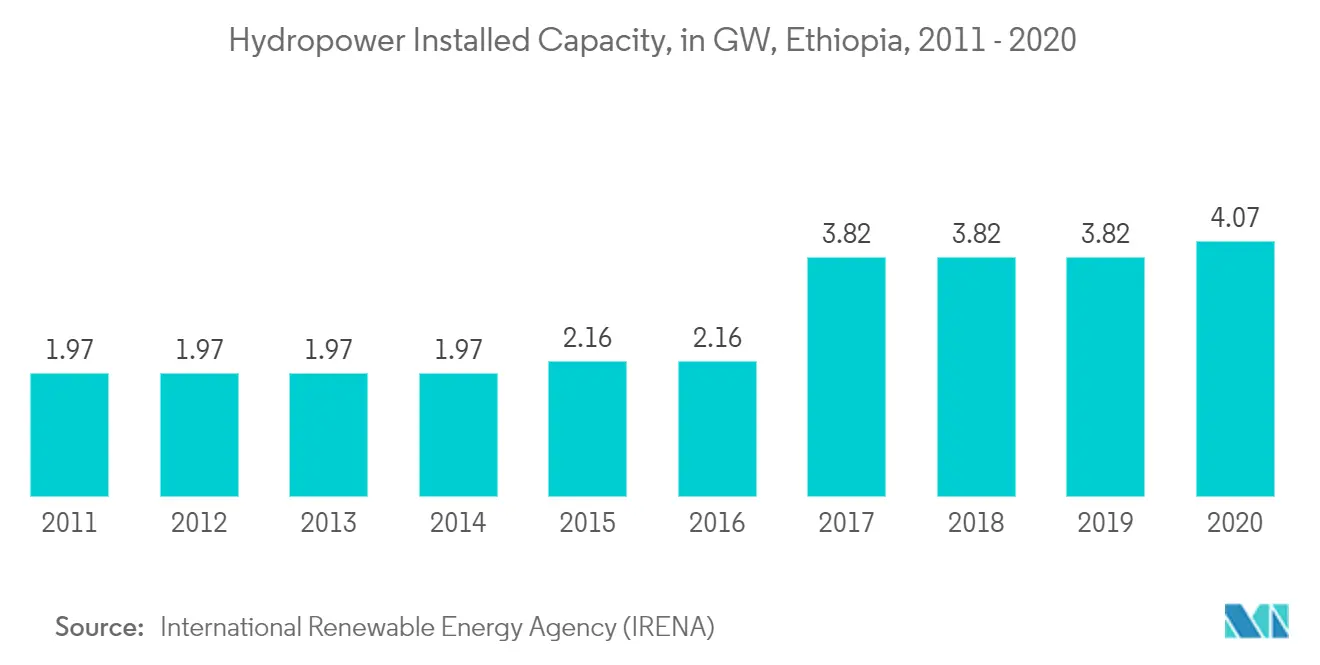Market Trends of East Africa Power Industry
This section covers the major market trends shaping the East Africa Power Market according to our research experts:
Hydro and Non-Hydro Renewables are Expected to Witness Significant Growth
- The Hydro and Non-Hydro Renewable segment includes the different sized reservoir dams that can be used to provide renewable energy and other renewable energies like wind and solar energy. Hydropower is the most used renewable energy in East Africa.
- Hydropower (including mixed plants) constitute almost 78% of the total renewable energy generated in the region, in 2019. It is expected to remain the single largest renewable energy contributing segment in the forecast period.
- In 2018, an upgrade project began by the Kenya Electricity Generating Co. and Voith GmbH to increase the Wanjii hydropower project's output capacity by about 20%. Modernization is expected to take place by changing the electrical equipment like turbines, generators, and control systems.
- The geographical features of the countries in the region aid in the creation of energy from hydropower. Due to the presence of physical structures like the Nile River, Mountains, and the great lakes.
- In recent years, the declining costs of solar panels and batteries have also helped solar energy sector to grow significnalty in the region, and is expected to continue to grow during the forecast period too.
- The aforementioned factors are expected thelp the Hydro and Non-Hydro Renewables segment to witness significant grwoth during the forecast period.

Ethiopia Expected to Witness Significant Growth
- The largest river in the world starts in the mountains of Ethiopia. Numerous dams have been conceived and built on the river, which has provided for renewable energy. However, water scarcity in the area has caused diplomatic differences between Egypt and Ethiopia and may cause some delays in the execution of the projects.
- Hydropower projects produce a significant share of power in the country. In 2020, the country had 4071 MW of installed capacity produced through these projects. Hydropower constitutes around 90% of all power generation capacity in the country.
- In 2019, Ethiopia's Ministry of Finance announced a tender for the construction of six solar plants, which are expected to have a combined 798 MW capacity. It is expected to be a public-private enterprise and is likely to decrease the country's energy deficit. Large-scale projects such as these also provide growth to the market.
- In 2020, the Grand Ethiopian Renaissance Dam is in construction. It is expected to have a capacity to generate 6000 MW when fully built. It is expected to become the largest operational dam in Africa, in turn driving the market during the forecast period.
- Hence, Ethiopia is expected to dominate the market due to its large increase in the installed renewable energy capacity in the forecast period.


